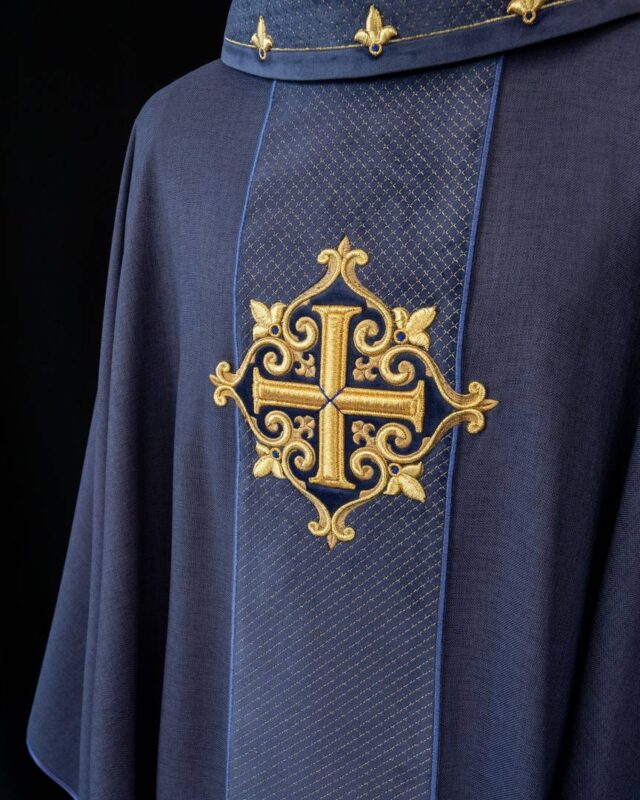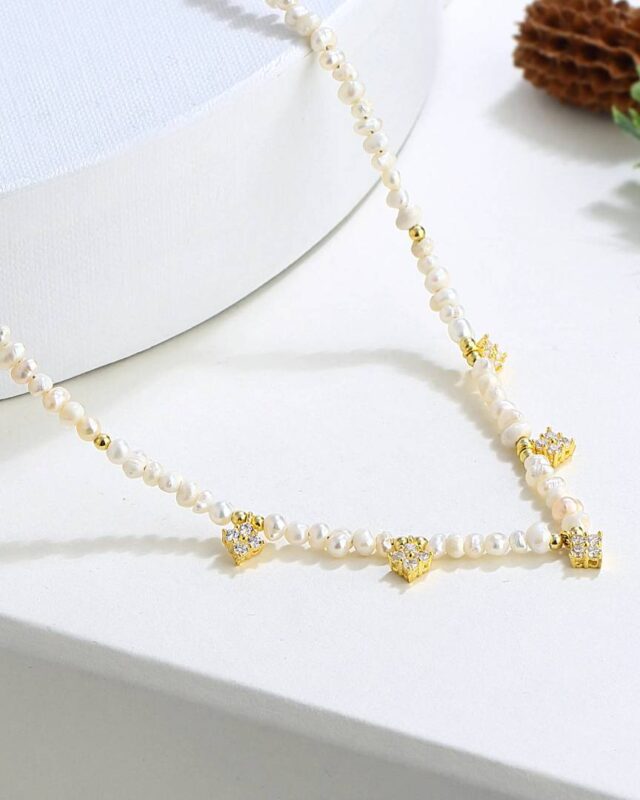Tattoos, a form of body modification, have a rich history that dates back thousands of years. The origin and evolution of tattoos have captivated researchers, historians, and enthusiasts alike, offering a fascinating glimpse into the diverse cultures and artistic expressions throughout human history. This comprehensive exploration delves into the origins of tattoos, their cultural significance, and the evolutionary path that has shaped the art form we recognize today.
The origins of tattoos can be traced back to prehistoric times, where evidence of tattooing practices has been discovered on mummified remains and ancient artifacts. These early tattoos were created by using sharp objects to puncture the skin and inserting pigments derived from natural sources, such as plants and minerals, into the puncture wounds. This process, known as tattooing, allowed for permanent or semi-permanent markings on the body. In ancient civilizations, tattoos held deep cultural and symbolic meanings. They served as markers of identity, status, and religious beliefs. For instance, in ancient Egypt, tattoos were predominantly found on women and often represented fertility and protection. In Polynesia, tattoos, known as tā moko, were intricate patterns that conveyed genealogy, social standing, and personal achievements. The Maori people of New Zealand embraced facial tattoos as a sign of their heritage and lineage. As civilizations interacted and cultures merged, tattoos began to transcend geographical boundaries, spreading across continents. The historical records and explorations of sailors and travelers provide valuable insights into the evolution of tattoos. During the Age of Exploration, sailors from Europe encountered indigenous cultures in the Pacific and the Americas, where they witnessed elaborate tattoo traditions. This exposure to foreign tattoo practices influenced European perceptions and eventually led to the adoption of tattoos within Western societies. The 18th and 19th centuries marked a significant shift in the perception of tattoos in the Western world.
While tattoos were initially associated with sailors, criminals, and marginalized groups, they started to gain popularity among the aristocracy and the upper class. Tattooed individuals became fashionable curiosities, and the art form underwent a transformation, becoming more intricate and aesthetically appealing. This shift, coupled with advancements in tattooing techniques and the introduction of new pigments, laid the foundation for the modern tattoo industry. The 20th century witnessed further advancements in tattoo technology and the establishment of professional tattoo studios. The invention of the electric tattoo machine in the late 1800s revolutionized the industry, allowing for faster and more precise tattooing. Additionally, the standardization of sterilization practices and the development of vibrant synthetic pigments further propelled the popularity of tattoos. In recent decades, tattoos have experienced a renaissance, emerging as a mainstream form of self-expression and art. The tattoo industry has become increasingly specialized, with artists pushing the boundaries of creativity and innovation. From traditional designs rooted in cultural heritage to abstract, contemporary pieces, tattoos now encompass a wide array of styles, techniques, and subject matter. The origin and evolution of tattoos continue to evolve alongside societal attitudes and technological advancements. Today, tattoos serve as deeply personal statements, reflections of individuality, and commemoration of significant life events. As the art form continues to evolve, incorporating new techniques such as watercolor tattoos, geometric patterns, and hyper-realistic portraits, it remains an enduring testament to human creativity, cultural diversity, and the enduring desire to leave a lasting mark on the world. In conclusion, the origin and evolution of tattoos trace back to ancient times, reflecting the rich tapestry of human history.
From their humble beginnings as sacred symbols to their modern incarnation as an art form, tattoos have transcended cultural boundaries and continue to captivate and inspire individuals around the globe. Understanding the historical context and cultural significance of tattoos allows us to appreciate the artistry and craftsmanship that has developed over centuries . . . and provides us with a profound appreciation for the depth of human expression and the interconnectedness of our global heritage. Whether it be a small symbol of personal meaning or a sprawling masterpiece that covers the body, tattoos serve as enduring testaments to our identities, beliefs, and experiences. As we continue to navigate the ever-evolving landscape of tattoo artistry, one thing remains certain: the origin and evolution of tattoos will continue to shape and inspire generations to come.
Where did the art of tattooing originate?
The art of tattooing, an ancient form of body modification, traces its roots back to the dawn of civilization. The origins of tattooing can be found in various cultures spanning different continents, each contributing to the evolution and development of this artistic practice. One of the earliest documented evidence of tattooing dates back to around 5,000 years ago in ancient Egypt. Archaeological findings have revealed mummies with intricate tattoo designs on their bodies, showcasing the significance of tattoos in the ancient Egyptian society. These tattoos were often symbols of social status, religious beliefs, or served as protective amulets.
Moving across the globe to Asia, specifically to Japan, we encounter another influential region in the history of tattooing. In Japan, the art of tattooing can be traced back to the Jomon period (around 10,000 BCE). During this time, tattoos were primarily used for spiritual and decorative purposes. However, tattooing gained prominence during the Edo period (1603-1868) when it became associated with the criminal underworld and was eventually banned. Despite the prohibition, tattooing continued underground and eventually resurfaced as an art form celebrated for its intricate designs and rich symbolism. In Polynesia, tattooing held deep cultural significance. Polynesian tattoos, known as tā moko in Maori culture and tatau in Samoan culture, were considered a rite of passage and often depicted tribal affiliations, personal achievements, and genealogy. These tattoos were traditionally done using bone or shark teeth tools and natural pigments, such as charcoal or plant extracts. The intricate patterns and motifs found in Polynesian tattoos continue to inspire contemporary tattoo artists around the world. The Americas also have a rich history of tattooing. In pre-Columbian Mesoamerica, the Olmec, Maya, and Aztec civilizations practiced tattooing for both decorative and ritualistic purposes. The designs often incorporated symbolic elements representing gods, animals, or celestial objects.
Similarly, indigenous tribes in North America, such as the Haida, Inuit, and Cree, used tattoos to convey cultural identity and spiritual beliefs. While the origins of tattooing can be traced back to these ancient civilizations, it is important to note that tattooing was also prevalent among numerous other cultures across the globe, including the ancient Greeks and Romans, the Celts, the Vikings, and many indigenous tribes in Africa and the Pacific Islands. Today, the art of tattooing has transcended its historical and cultural boundaries, becoming a global phenomenon. It has evolved into a thriving industry that encompasses various styles, techniques, and artistic expressions. From traditional designs to contemporary innovations, tattooing has become a form of self-expression, allowing individuals to adorn their bodies with meaningful symbols, personal narratives, and aesthetic creations. In conclusion, the art of tattooing originated in diverse civilizations throughout history. From ancient Egypt to Japan, Polynesia to the Americas, tattoos have served as powerful cultural markers, symbols of identity, and personal expressions. As the art form continues to evolve, it remains deeply rooted in our collective human history and continues to captivate and inspire people across the globe.

What are the historical roots of tattoos?
The historical roots of tattoos can be traced back thousands of years, spanning across different cultures and civilizations. Tattoos have served various purposes throughout history, including cultural, religious, social, and personal significance. Understanding the origins of tattoos provides valuable insights into the human desire for self-expression and the evolution of this ancient art form. One of the earliest documented evidence of tattoos dates back to around 3300 BCE and was found on the famous “Iceman” mummy discovered in the Italian Alps. The preserved remains of this ancient individual revealed a series of tattoos consisting of simple dots and lines, primarily located on the lower spine, joints, and ankles.
These markings are believed to have held therapeutic or medicinal purposes, possibly related to acupuncture or pain relief. Moving forward in time, ancient Egypt offers another glimpse into the historical roots of tattoos. Egyptian artwork and mummies from as early as 2000 BCE depict individuals adorned with intricate tattoos. These tattoos often symbolized religious and spiritual beliefs, with images of gods, goddesses, and sacred symbols adorning the skin. The Egyptian use of tattoos extended beyond the living and also played a role in the afterlife, where tattoos were believed to provide magical protection and guidance to the deceased. In Asia, particularly in ancient China and Japan, tattoos had different cultural connotations. In China, tattoos were associated with criminality, serving as permanent marks of punishment for lawbreakers. However, tattoos also held a positive significance in Chinese culture, where they were used for medicinal purposes and to signify tribal or ethnic affiliations. In Japan, the art of tattooing, known as irezumi, emerged during the Edo period (1603-1868). Irezumi was practiced by skilled artisans and adorned the bodies of the samurai class. These intricate and vibrant tattoos conveyed social status, spiritual beliefs, and stories from mythology. Across the globe, indigenous cultures also have a rich history of tattooing.
The Polynesian islands, including Samoa, Tahiti, and Hawaii, have a long-standing tradition of tattoos known as tatau. Polynesian tattoos are characterized by bold geometric patterns and intricate designs, often covering large portions of the body. These tattoos were deeply rooted in cultural identity, social rank, and rites of passage. They conveyed a person’s genealogy, achievements, and spiritual connections, serving as a visual language that communicated their story to the world. In the Western world, tattoos were initially associated with marginalized groups, such as sailors, prisoners, and circus performers. However, during the late 19th and early 20th centuries, tattoos gained popularity among the upper classes, thanks to the influence of European royalty and prominent figures. This shift in perception paved the way for tattooing to become a mainstream art form and a means of personal expression. In conclusion, the historical roots of tattoos are deeply ingrained in human civilization, spanning continents, cultures, and millennia. From ancient therapeutic markings to spiritual symbols, from criminal punishment to social status, tattoos have evolved and transformed throughout history. They continue to serve as a powerful medium for self-expression, cultural preservation, and storytelling. Recognizing the rich tapestry of tattoo history allows us to appreciate the diverse meanings and artistic traditions associated with this timeless art form.

How have tattoos been practiced throughout history?
Throughout history, tattoos have served as a prominent form of body modification and self-expression in various cultures worldwide. The practice of tattooing dates back thousands of years, with evidence of its existence found in archaeological remains and historical accounts. This article delves into the fascinating journey of tattooing, exploring its evolution and the diverse ways in which it has been practiced throughout different eras. The origins of tattooing can be traced to ancient times, with early evidence emerging from several regions. In Polynesia, for example, the art of tattooing has a rich history, deeply rooted in cultural traditions. The Polynesians used finely crafted tools made from bone, shells, and even bird beaks to etch intricate designs into the skin.
These tattoos held significant cultural and social meanings, representing one’s status, lineage, and achievements within the community. Moving further back in time, ancient Egyptian civilization also embraced tattooing as a form of artistic expression. Archaeological discoveries have revealed mummified bodies adorned with tattoos, suggesting that the practice held both decorative and ritualistic purposes. The Egyptians utilized a variety of pigments derived from natural sources, such as plants and minerals, to create elaborate designs symbolizing religious beliefs or personal significance. Similarly, in ancient Greece and Rome, tattoos found their place in society, albeit with different connotations. Tattoos were often associated with slaves and criminals, serving as permanent marks of identification or punishment. However, during the Hellenistic period, tattoos began to transcend these negative associations and became popular among certain social groups, including soldiers and athletes.
These individuals would have their accomplishments or allegiances permanently inked on their bodies. As history progressed, tattooing practices witnessed fluctuations in popularity and societal acceptance. In the Middle Ages, for instance, tattooing in Europe declined significantly due to the influence of Christianity, which viewed the practice as a form of pagan ritual. However, some cultures within the Middle East continued to practice tattooing, with methods and designs reflecting their unique traditions and beliefs. The 18th and 19th centuries marked a significant turning point for tattoos as they became intertwined with exploration and colonial encounters. Sailors, explorers, and traders brought back tales and tattoos from distant lands, igniting curiosity and fascination among Western societies. As a result, tattooing experienced a resurgence, primarily in Europe and North America, where it became associated with seafaring and adventure. During the 20th century, tattoos underwent a gradual transformation, evolving from niche subcultures to mainstream popularity. The development of modern tattoo machines and the establishment of professional tattoo studios contributed to the accessibility and standardization of the practice. Tattoos began to transcend social boundaries, with people from various backgrounds seeking them for personal expression, aesthetics, and commemoration. In recent decades, tattoos have continued to evolve, incorporating advancements in technology and artistic techniques. The availability of a vast array of tattoo pigments, improved equipment, and skilled artists has led to a renaissance of tattoo artistry. Tattoo styles have diversified, ranging from traditional and neo-traditional designs to realism, minimalism, and abstract forms. Moreover, the rise of cultural appreciation and globalization has fostered cross-cultural influences, enabling individuals to embrace tattoos as a means of celebrating diversity and heritage. In conclusion, the practice of tattooing has a rich and varied history, spanning multiple civilizations and eras. From its ancient origins in Polynesia and Egypt to its associations with social status, spirituality, and identity throughout different cultures, tattoos have served as enduring symbols of personal expression. As society evolves, so too does the art of tattooing, reflecting contemporary aesthetics, technology, and the ever-changing values of individuals.

What are the cultural significance and symbolism behind tattoos?
The cultural significance and symbolism behind tattoos have been an integral part of human history for centuries, transcending geographical boundaries and encompassing diverse civilizations. Tattoos, the permanent markings on the skin, have served as powerful expressions of personal identity, cultural heritage, social status, and spiritual beliefs. This article delves into the intricate tapestry of tattoo symbolism, shedding light on its multifaceted meanings across various cultures. Tattoos possess a rich cultural significance, acting as visual narratives that reflect an individual’s affiliation to a particular group or community.
In ancient civilizations, such as the Maori of New Zealand or the Polynesians, tattoos functioned as rites of passage, marking milestones in a person’s life journey. These intricate designs etched onto the skin served as a symbolic representation of one’s tribal lineage, social standing, and personal achievements. Each tattoo carried profound cultural meaning, encapsulating stories of bravery, love, spirituality, and ancestral connections. Furthermore, tattoos have been vehicles for cultural preservation and identity expression. Indigenous communities around the world have utilized tattoos to safeguard their heritage and traditional knowledge. These indelible markings act as living records, transmitting cultural symbols, mythological narratives, and spiritual beliefs from one generation to the next. By adorning their bodies with these cultural emblems, individuals affirm their place within a larger social fabric and uphold their ancestral legacy. Symbolism plays a pivotal role in tattoo artistry, as specific images, motifs, and patterns convey deeper meanings beyond their aesthetic appeal. Various symbols hold different connotations across cultures. For instance, the lotus flower, revered in Eastern philosophies, represents purity, enlightenment, and spiritual growth. In contrast, the dragon, often featured in East Asian tattoo designs, embodies power, wisdom, and protection. Similarly, the Celtic knotwork, with its intricate interlacing patterns, symbolizes the eternal cycle of life, death, and rebirth in Celtic mythology.
Religious and spiritual symbolism also permeates the world of tattoos. From the cross in Christianity to the Om symbol in Hinduism, these sacred icons are inked onto the skin as a visible devotion to one’s faith. Tattoos can serve as a constant reminder of one’s spiritual beliefs, fostering a sense of connection to the divine and providing solace during life’s trials and tribulations. In contemporary society, tattoos have taken on a broader range of meanings. They can serve as personal statements, reflecting individuality, creativity, and self-expression. Tattoos may carry sentimental value, commemorating significant life events, loved ones, or personal milestones. Some individuals use tattoos as a form of empowerment, overcoming personal challenges or embracing their unique identities. Moreover, tattoos have become a medium for social activism, conveying political or social messages and fostering a sense of solidarity within communities. It is worth noting that tattoo symbolism is a dynamic and evolving phenomenon. As cultures continue to interact and influence one another, new meanings and interpretations emerge. Tattoo artists and enthusiasts constantly draw inspiration from diverse cultural traditions, blending different symbolic elements to create innovative designs that resonate with contemporary sensibilities. In conclusion, tattoos bear profound cultural significance and symbolism, serving as visual markers of personal and communal identities. From ancient rituals to modern self-expression, tattoos encapsulate narratives of heritage, spirituality, social standing, and personal beliefs. As society evolves, so too does the symbolism associated with tattoos, reflecting the ongoing interplay between tradition and innovation. Through the artistry of tattoos, individuals continue to express their unique stories, while honoring the timeless legacy of this ancient practice.

How did tattoos evolve and spread across different cultures?
The evolution and widespread adoption of tattoos across different cultures is a fascinating topic that sheds light on the human desire for self-expression and the interconnectedness of societies throughout history. Tattoos, defined as permanent markings made by inserting pigments into the skin, have a rich and diverse history that spans thousands of years. The origins of tattoos can be traced back to ancient times, with evidence of their existence dating back over 5,000 years. The exact reasons for their early adoption remain speculative, but theories suggest that tattoos served a variety of purposes, including tribal identification, spiritual significance, and cultural traditions. The technical process of tattooing varied across cultures, with different tools, techniques, and pigments being utilized. In ancient Egypt, tattoos were predominantly associated with religious and spiritual practices.
The designs often depicted gods, symbols, and protective amulets, reflecting the belief that tattoos held magical or supernatural powers. Similarly, in ancient Greece and Rome, tattoos were commonly used to signify religious devotion, as well as to mark slaves and criminals as a form of punishment or social stigmatization. Moving eastward, we encounter the rich history of tattooing in Asia. In Japan, the art of tattooing, known as irezumi or horimono, can be traced back to the Jomon period (10,000-300 BC). Initially used for decorative and spiritual purposes, tattoos in Japan later became associated with criminality during the Edo period (1603-1868). However, in the modern era, traditional Japanese tattoos have regained their cultural significance and are now appreciated for their intricate designs and symbolism. In Southeast Asia, tattoos played a vital role in tribal cultures as a means of cultural identification and spiritual protection. The indigenous peoples of Borneo, known as the Dayaks, practiced tattooing as an integral part of their social and religious rituals. Tattoo designs often represented animal spirits, ancestral lineage, or served as symbols of bravery and fertility. The spread of tattoos across different cultures can be attributed to various factors, including trade, exploration, and cultural exchange. As ancient civilizations interacted through conquest, colonization, and commerce, the practice of tattooing was often shared and adopted by new societies. For example, Polynesians, renowned for their intricate tribal tattoos, carried their traditions across vast distances as they explored and settled in new territories throughout the Pacific.
With the advent of globalization and the ease of travel and communication, tattoos have transcended cultural boundaries and become a ubiquitous form of self-expression in the modern world. Today, tattooing techniques have advanced significantly, with the introduction of electric tattoo machines, sterile practices, and a wide array of vibrant pigments. Tattoo artists have gained recognition as skilled artisans, pushing the boundaries of creativity and offering individuals a platform to tell their stories through intricate and personalized body art. In conclusion, the evolution and spread of tattoos across different cultures showcase the human desire for self-expression and the interconnectedness of societies throughout history. From their ancient origins to modern-day practices, tattoos have served as markers of identity, spirituality, cultural heritage, and personal narratives. As we continue to embrace the diversity of tattooing traditions, we celebrate the artistry, symbolism, and enduring appeal of this timeless form of body adornment.

What are some traditional tattooing techniques and tools used in ancient civilizations?
Traditional tattooing techniques and tools have played a significant role in the rich tapestry of ancient civilizations. Across different cultures and regions, these techniques and tools varied, reflecting the diverse artistic expressions and cultural practices of our ancestors. Delving into the fascinating world of ancient tattoos unveils a plethora of innovative methods and instruments that were employed to create indelible works of body art. One such traditional technique found in several ancient civilizations is hand-tapping, also known as stick-and-poke tattooing.
This method involved manually inserting pigment into the skin using a sharp object, typically a bone or a wooden stick with a cluster of needles attached to one end. The tattoo artist would dip the needles into the ink and then repeatedly tap the instrument into the skin, creating intricate patterns and designs. Hand-tapping was prevalent in various cultures, including Polynesia, Southeast Asia, and parts of Africa, and was known for producing bold and enduring tattoos. In the Polynesian culture, specifically in places like Samoa and Tahiti, the tattooing technique called tātau or tatau was practiced. The tools used for tātau were primarily composed of bone or shell, often fashioned into a comb-like instrument known as a “au. ” The au was then attached to a wooden handle, creating a handheld tool. The tattoo artist would hold the tool and strike it with a mallet, embedding the inked comb into the skin. This method allowed for the creation of intricate geometric and abstract designs that held deep cultural and spiritual significance. Moving on to ancient Egypt, a civilization renowned for its artistry and symbolism, a unique tattooing technique known as “puncture tattooing” was employed. This technique involved using a bundle of needles or a single needle attached to a wooden or metal handle.
The tattooist would puncture the skin with the needle, depositing ink into the puncture wounds. The resulting tattoos often depicted sacred symbols, animals, or hieroglyphics, serving as a means of identification, protection, or as an expression of religious devotion. In ancient Japan, a technique called tebori was practiced, which involved hand-carving tattoos into the skin using a set of specialized tools. These tools typically consisted of slender metal needles attached to bamboo or wooden handles. The tattoo artist would use a combination of tapping, pressing, and dragging motions to create intricate designs. Tebori was a meticulous and time-consuming process, and it required great skill and precision to achieve the desired artistic effect. This technique played a vital role in the development of traditional Japanese tattooing, known as irezumi, which is still revered today. Ancient civilizations also utilized various pigments and dyes to create tattoos. In many cultures, natural substances such as plant extracts, crushed minerals, and even animal-derived pigments were used to produce vibrant and long-lasting colors. These pigments were often mixed with water, oil, or other mediums to create a workable ink that could be applied to the skin. The traditional tattooing techniques and tools employed by ancient civilizations not only showcase their technical ingenuity but also reflect the cultural significance and symbolism associated with body art. These methods have left an indelible mark on the history of tattooing, influencing modern tattoo practices and serving as a testament to the timeless allure of this ancient art form.






















Your enthusiasm and passion for this topic is contagious. It made reading this post a great joy for me.